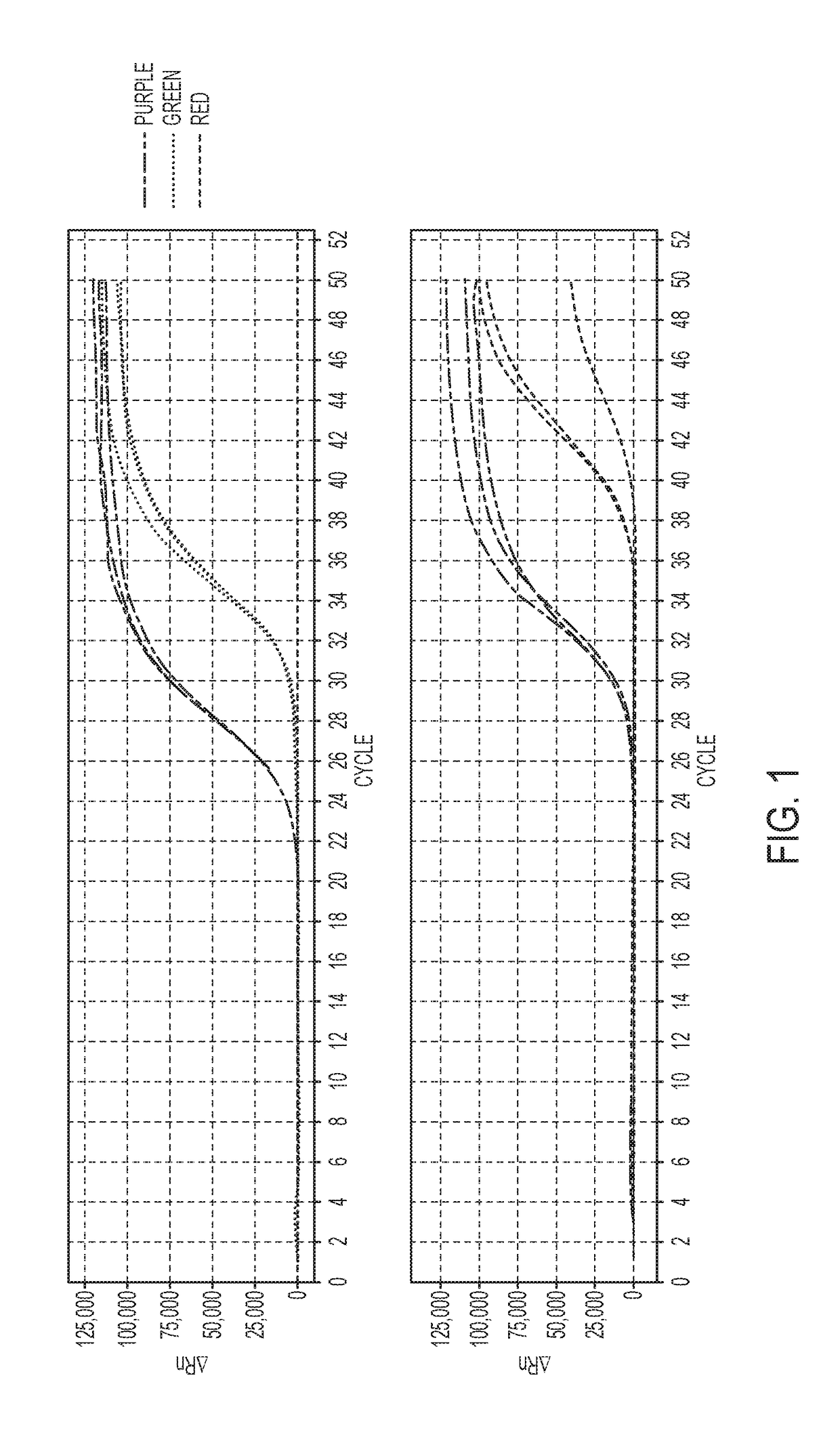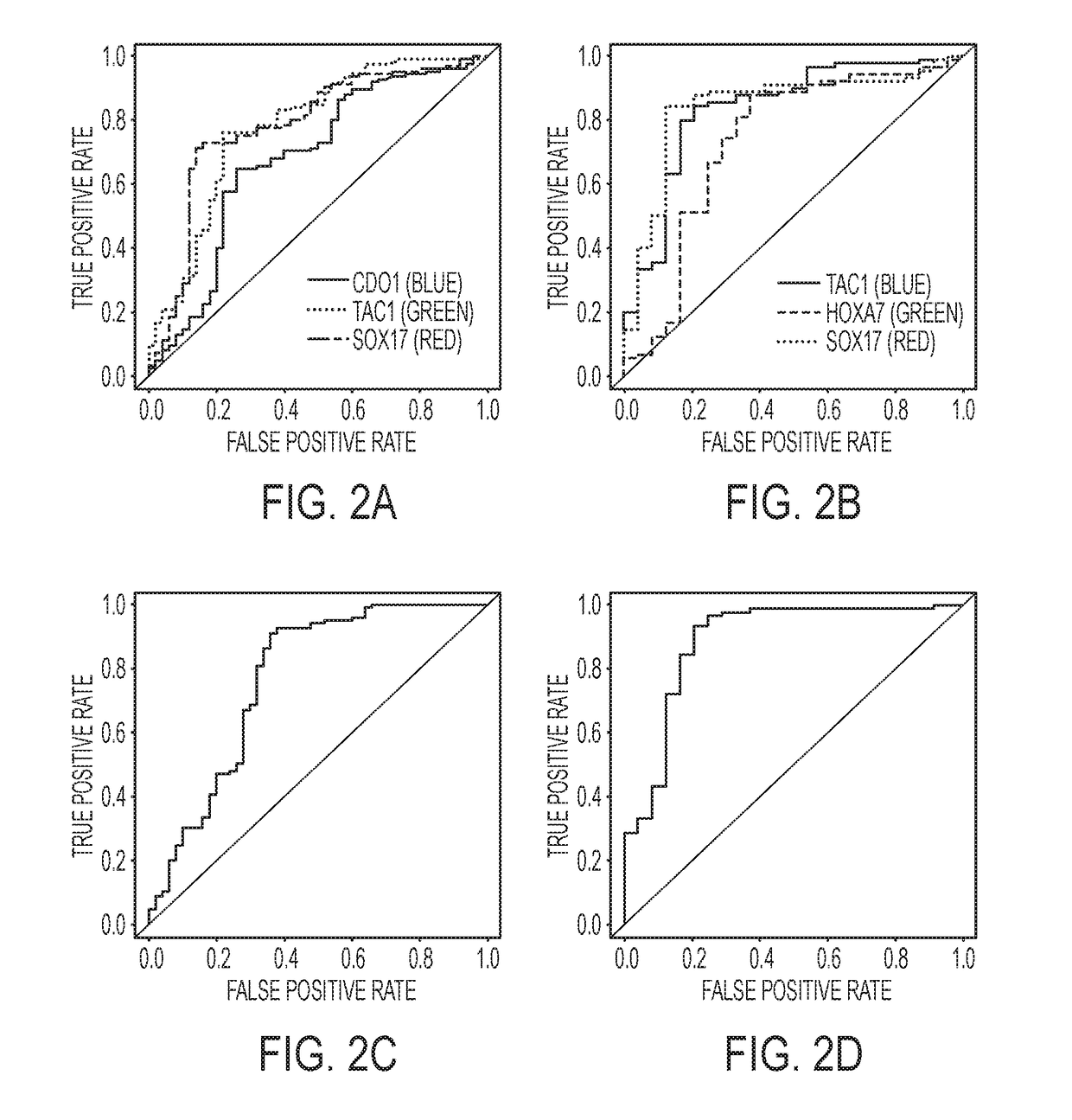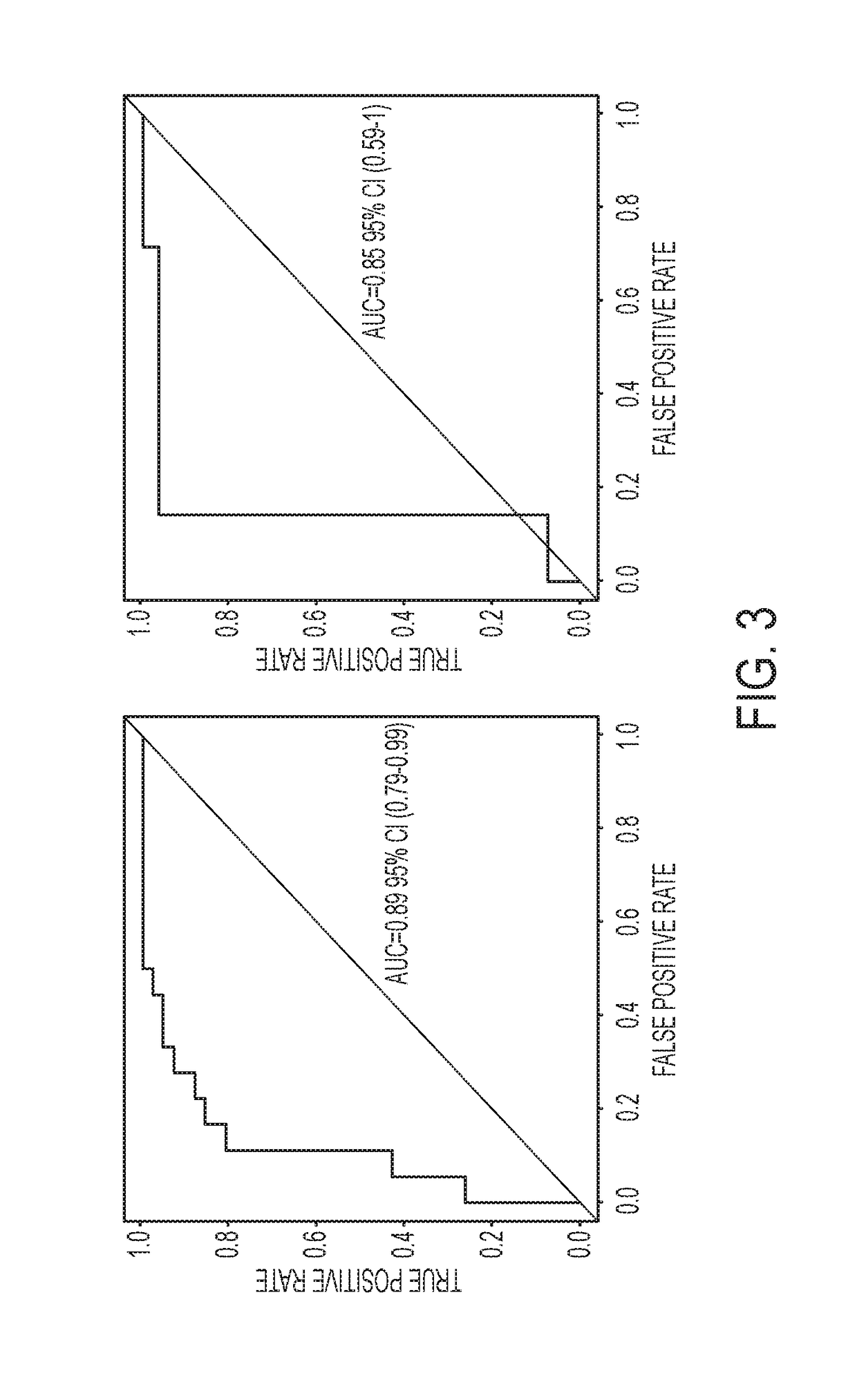Compositions and methods for detecting and diagnosing neoplasia
a methylation profile and nucleic acid technology, applied in the field of nucleic acid methylation and methylation profiles to detect and diagnose disease, can solve the problems of inability to predict, the precise role of abnormal dna methylation in human tumorigenesis, and the inability to accurately determine the significance of abnormal dna methylation, etc., to achieve the effect of preventing and treating neoplasia and detecting neoplasia
- Summary
- Abstract
- Description
- Claims
- Application Information
AI Technical Summary
Benefits of technology
Problems solved by technology
Method used
Image
Examples
example 1
and Methods
[0238]The National Lung Screening Trial (NLST) showed a 20% reduction in lung cancer mortality using low-dose computed tomography (CT) screening, but with a 96.4% false positive rate. Lung cancer screening can be improved through cancer-specific biomarkers using an in-vitro assay to detect cancer DNA in body fluids. Improvements to the diagnostic accuracy of lung cancer diagnosis using gene promoter methylation in sputum and plasma through the use of Methylation On Beads (MOB) and a highly specific panel of genes for detection of lung cancer was sought.
[0239]A retrospective case-control study involving subjects who had nodules suspicious for lung cancer on CT imaging, and who subsequently underwent surgery was performed. Plasma and sputum were obtained pre-operatively. Cases had pathological confirmation of non-small cell lung cancer (NSCLC) stage IA, IB and IIA while controls were pathologically free of cancer. Promoter hypermethylation levels and the amplification cycle...
example 2
[0249]Of 651 patients observed, 150 subjects had T-T2N0 NSCLC and 60 patients had non-cancerous lesions. Six genes were methylated in significantly more people with cancer than non-cancer in both plasma and sputum (p<0.001) with the exception of HOXA9 in sputum. Sensitivity and specificity for lung cancer diagnosis from a three-gene combination for sputum was 93% and 79% and for plasma was 91% and 64%. The area under the Receiver Operating Curve for the three genes in sputum was 0.89 95% CI (0.80-0.98) and for the genes in plasma was 0.77 95% confidence interval (CI) (0.68-0.86).
Characteristics of the Patients
[0250]A total of 210 patients fulfilled inclusion criteria with 150 subjects having lung cancer and 60 individuals with non-cancerous lung lesions (Table 1). Clinical and demographic variables were similar in cases and controls with the exception of age, number of pack-year and nodule size (cm) as well as volume (cm3). Subjects with lung cancer were significantly older than con...
example 3
n
[0257]According to the techniques herein, a sputum and plasma test that can identify patients with early stage NSCLC was developed. This assay has several characteristics which make it clinically applicable (i) it has a diagnostic sensitivity and specificity in sputum of 93% and 86%, respectively which achieves the diagnostic accuracy mandated by most clinical standards 10,37 (ii) it can be performed using minute quantities of sputum or serum (iii) it can distinguish CT detected malignant versus benign nodules making it applicable to ameliorating the current problem of high false positive screens (iv) this assay seems to be associated with a risk of having lung cancer independent of age, pack-year and nodule size.(v) it is able to diagnose early stage lung cancer in smokers making it likely to be applicable to asymptomatic, smokers at high risk for lung cancer (vi) the assay is relatively inexpensive, and PCR-based making it relatively simple to perform (vii) promoter methylation o...
PUM
| Property | Measurement | Unit |
|---|---|---|
| Size | aaaaa | aaaaa |
| Fraction | aaaaa | aaaaa |
| Fraction | aaaaa | aaaaa |
Abstract
Description
Claims
Application Information
 Login to View More
Login to View More - R&D
- Intellectual Property
- Life Sciences
- Materials
- Tech Scout
- Unparalleled Data Quality
- Higher Quality Content
- 60% Fewer Hallucinations
Browse by: Latest US Patents, China's latest patents, Technical Efficacy Thesaurus, Application Domain, Technology Topic, Popular Technical Reports.
© 2025 PatSnap. All rights reserved.Legal|Privacy policy|Modern Slavery Act Transparency Statement|Sitemap|About US| Contact US: help@patsnap.com



